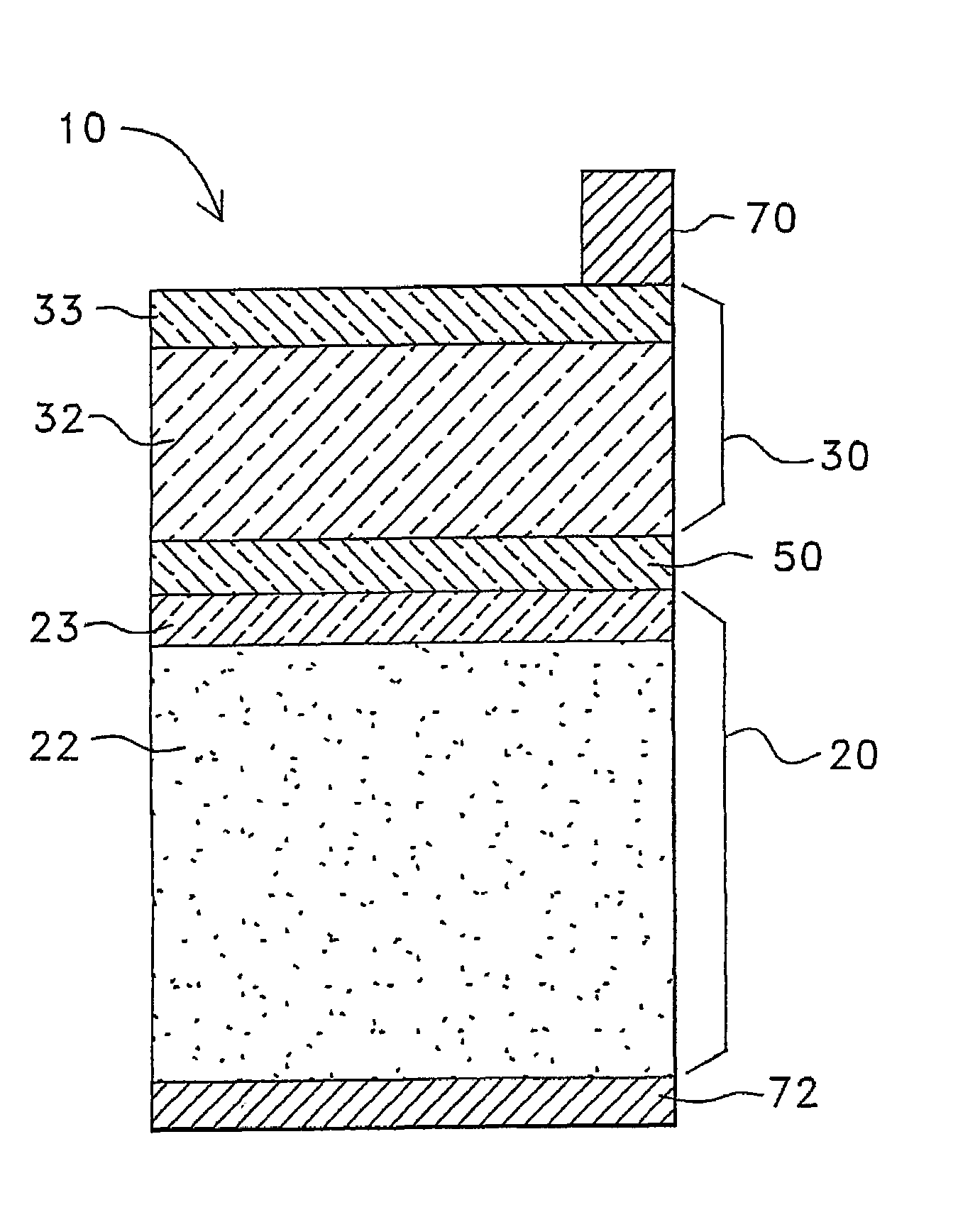Multi-junction solar cell device
- Summary
- Abstract
- Description
- Claims
- Application Information
AI Technical Summary
Benefits of technology
Problems solved by technology
Method used
Image
Examples
Embodiment Construction
[0018]As illustrated in FIGS. 1 and 2, the present invention is a multi-junction solar cell device, indicated generally in its two-junction version as 10 and in its three-junction version as 100, having lattice-matched (BAlGaIn)(NPAsSb) alloys grown on silicon. The solar cell device 10 rivals the efficiencies of high-efficiency cells on GaAs or Ge, with significant cost savings and improvements in mechanical stability.
[0019]As illustrated in FIG. 1, the two-junction version of the solar cell device 10 of the present invention includes a single-crystal silicon substrate 22. The two-junction device 10 comprises a bottom active cell 20, a top active cell 30, and an interconnecting tunnel junction layer 50. The bottom active cell 20 comprises at least a p-type (or n-type) base layer formed within the silicon substrate 22 and an n-type (or p-type) emitter layer 23 forming a p-n junction. The top active cell 30 comprises at least a p-type (or n-type) base layer 32 and an n-type (or p-type...
PUM
 Login to View More
Login to View More Abstract
Description
Claims
Application Information
 Login to View More
Login to View More - R&D
- Intellectual Property
- Life Sciences
- Materials
- Tech Scout
- Unparalleled Data Quality
- Higher Quality Content
- 60% Fewer Hallucinations
Browse by: Latest US Patents, China's latest patents, Technical Efficacy Thesaurus, Application Domain, Technology Topic, Popular Technical Reports.
© 2025 PatSnap. All rights reserved.Legal|Privacy policy|Modern Slavery Act Transparency Statement|Sitemap|About US| Contact US: help@patsnap.com


